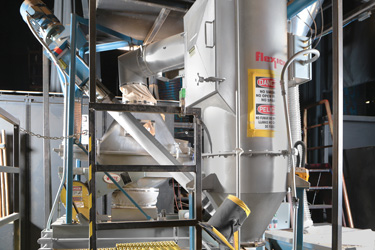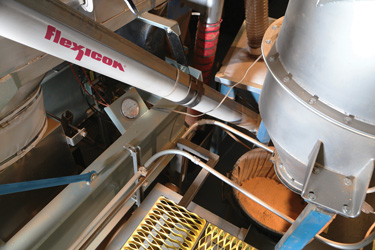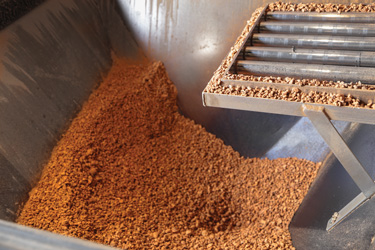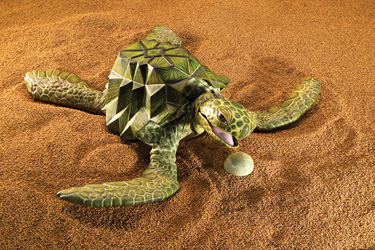 Click to enlarge
Click to enlargeCirque du Soleil's production of KÀ at the MGM Grand in Las Vegas operates a cork cleaning system that removes dust, undersized/oversized particles and ferrous contaminants. Cork 'sand' flows from the stage to the basement, from where it is conveyed pneumatically to a hopper that gravity discharges into a Flexicon Flexible Screw Conveyor, which in turns feeds the cork into a vibratory separator at controlled rates.
 Click to enlarge
Click to enlargeA shaftless screw rotating within an enclosed tube elevates the material and feeds it into the vibratory separator dust-free. The screw is driven beyond the point of discharge, avoiding material contact with bearings or lubricants.
 Click to enlarge
Click to enlargeThe cleaned and conditioned cork 'sand' is ready for the next performance.
 Click to enlarge
Click to enlargeCirque du Soleil's KÀ beach scene plays out on faux sand of cork granules which is automatically cleaned, conditioned and reused for each performance.


 Click to enlarge
Click to enlarge